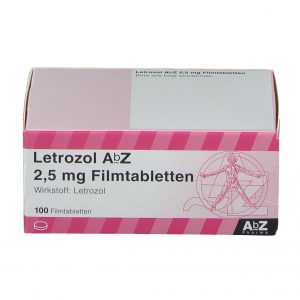Description
Side effects
As a rule, adverse reactions are mild to moderately pronounced and are mainly related to suppression of estrogen synthesis.
The incidence of adverse reactions is estimated as follows: occurring “very often” – >10%, “frequently” – ≥1 – <10%, “infrequently” – ≥0.1% – <1%, “rarely” – >0.01 – <0.1%, “very rarely” – <0.01%, including isolated reports.
- Infectious and parasitic diseases:
Infrequently – urinary tract infections.
Benign, malignant and unspecified neoplasms (including cysts and polyps):
Infrequently – pain in the area of the tumour.
- Blood and lymphatic system disorders:
Infrequently – leucopenia.
- Immune system disorders:
Frequency unknown – anaphylactic reactions.
- Metabolic and nutritional disorders:
Very often – hypercholesterolaemia; often – anorexia, increased appetite.
- Mental disorders:
Often – depression; infrequently – anxiety (including nervousness), irritability.
- Nervous system disorders:
Often – headache, dizziness; infrequently – drowsiness, insomnia, memory impairment, sensory disturbances (including paresthesia, hypoesthesia), taste perception disorders, episodes of cerebral circulation disorders, carpal tunnel syndrome.
- Visual disorders:
Infrequently – cataract, eye irritation, “blurred” vision.
- Cardiac disorders:
Infrequently – palpitations*, tachycardia, ischaemic heart disease (including first-time or worsening course of existing angina pectoris, angina pectoris requiring surgical intervention, myocardial infarction, myocardial ischaemia).
- Vascular disorders:
Very often – hot flashes (“hot flashes”); frequently – increased blood pressure (BP); infrequently – thrombophlebitis (including thrombophlebitis of superficial and deep veins); rarely – pulmonary embolism, arterial thrombosis, stroke.






Reviews
There are no reviews yet.